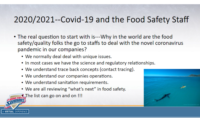In May 2020, the World Health Organization (WHO) attempted to verify the zoonotic source of the SARS-CoV-2 virus (COVID-19) and its route of introduction to the human population, including a possible role of intermediate hosts. The aim of the study was to prevent reinfection in both animals and humans, and also to establish new zoonotic reservoirs, thereby reducing further risks of the emergence, and also transmission, of zoonotic diseases.
A group of international scientists assembled by WHO traveled to Wuhan, China, where the first cases of Coronavirus were reported, at the end of 2019.
There were four scenarios they were examining:
- Direct zoonotic transmission to humans
- Introduction through an intermediate host, followed by spillover
- Through the cold food chain
- Through a laboratory incident.
The first scenario was considered to be a possible-to-likely pathway, and the second was likely to very likely. The latter scenarios were extremely unlikely.
When thinking about the possibility of introduction through the food chain, experts looked at one outbreak where live virus was isolated from the outer package of an imported frozen product.
However, there was no conclusive evidence for foodborne transmission of SARS-CoV-2, and there is a low probability of cold-chain contamination with the virus.
Governments including Australia, Canada, Denmark, Japan, Republic of Korea, United Kingdom, and the U.S. expressed concern about the study, in a joint statement.
“Together, we support a transparent and independent analysis and evaluation, free from interference and undue influence, of the origins of the COVID-19 pandemic. It is critical for independent experts to have full access to all pertinent human, animal, and environmental data, research, and personnel involved in the early stages of the outbreak relevant to determining how this pandemic emerged,” they said.
U.S. lawmakers are considering the Preventing Future Pandemics Act. The bipartisan bill ideally wants a shutdown of commercial wildlife markets, with the purpose being to end the import, export, and sale of live wildlife for human consumption in the U.S., and to phase out demand for wildlife as a food source.




